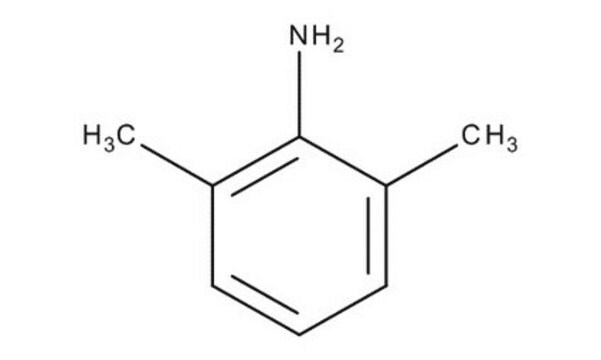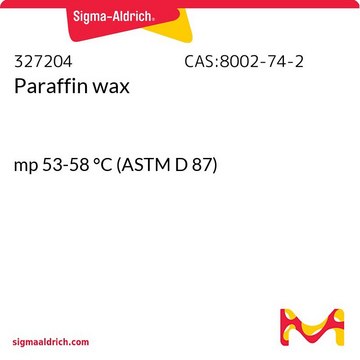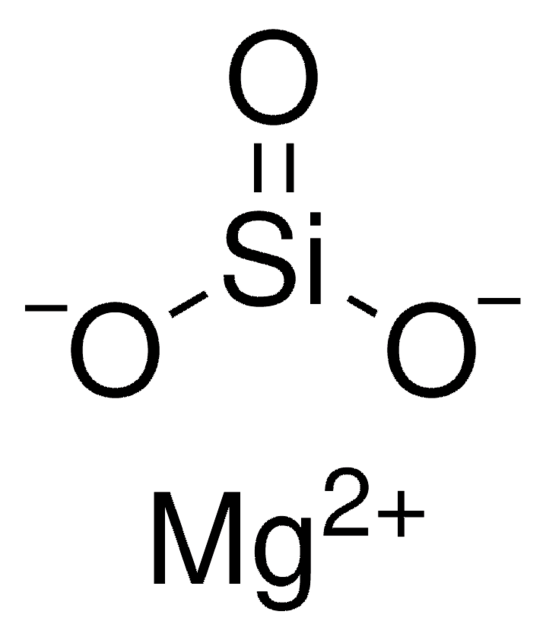8.20547
n-Eicosane
for synthesis
Synonim(y):
n-Eicosane
About This Item
Polecane produkty
ciśnienie pary
<0.001 hPa ( 25 °C)
Poziom jakości
Próba
≥98.0% (GC)
Postać
crystals
tw
204-206 °C/20 hPa
mp
34-37 °C
temp. przejścia
flash point 176 °C
gęstość
0.79 g/cm3 at 20 °C
temp. przechowywania
2-30°C
InChI
1S/C20H42/c1-3-5-7-9-11-13-15-17-19-20-18-16-14-12-10-8-6-4-2/h3-20H2,1-2H3
Klucz InChI
CBFCDTFDPHXCNY-UHFFFAOYSA-N
Zastosowanie
- Effect of temperature and graphite particle fillers on thermal conductivity and viscosity of phase change material n-eicosane: This study discusses the enhanced thermal conductivity and viscosity changes of n-eicosane when mixed with graphite particle fillers, important for applications in energy storage and thermal management (Srinivasan et al., 2017).
- Self-Assembly Synthesis of Microencapsulated n-Eicosane Phase-Change Materials with Crystalline-Phase-Controllable Calcium Carbonate Shell: This paper covers the synthesis of microencapsulated n-eicosane with a calcium carbonate shell, crucial for enhancing thermal energy storage systems in drug delivery mechanisms (Yu et al., 2014).
- Preparation and thermal properties of n-eicosane/nano-SiO2/expanded graphite composite phase-change material for thermal energy storage: This research explores the preparation and enhanced thermal properties of n-eicosane composites, beneficial for applications in material sciences focusing on energy efficiency (Zhang et al., 2020).
- An experimental study of enhanced heat sinks for thermal management using n-eicosane as phase change material: This article evaluates the use of n-eicosane in enhancing heat sinks, which is significant for designing more efficient cooling systems in pharmaceutical manufacturing processes (Arshad et al., 2018).
Komentarz do analizy
Melting range (lower value): ≥ 36 °C
Melting range (upper value): ≤ 39 °C
Identity (GC): passes test
Due to its specific melting range the product may be solid, liquid, a solidified melt or a supercooled melt.
Hasło ostrzegawcze
Danger
Zwroty wskazujące rodzaj zagrożenia
Zwroty wskazujące środki ostrożności
Klasyfikacja zagrożeń
Asp. Tox. 1
Kod klasy składowania
11 - Combustible Solids
Klasa zagrożenia wodnego (WGK)
WGK 3
Temperatura zapłonu (°F)
Not applicable
Temperatura zapłonu (°C)
Not applicable
Certyfikaty analizy (CoA)
Poszukaj Certyfikaty analizy (CoA), wpisując numer partii/serii produktów. Numery serii i partii można znaleźć na etykiecie produktu po słowach „seria” lub „partia”.
Masz już ten produkt?
Dokumenty związane z niedawno zakupionymi produktami zostały zamieszczone w Bibliotece dokumentów.
Klienci oglądali również te produkty
Nasz zespół naukowców ma doświadczenie we wszystkich obszarach badań, w tym w naukach przyrodniczych, materiałoznawstwie, syntezie chemicznej, chromatografii, analityce i wielu innych dziedzinach.
Skontaktuj się z zespołem ds. pomocy technicznej









